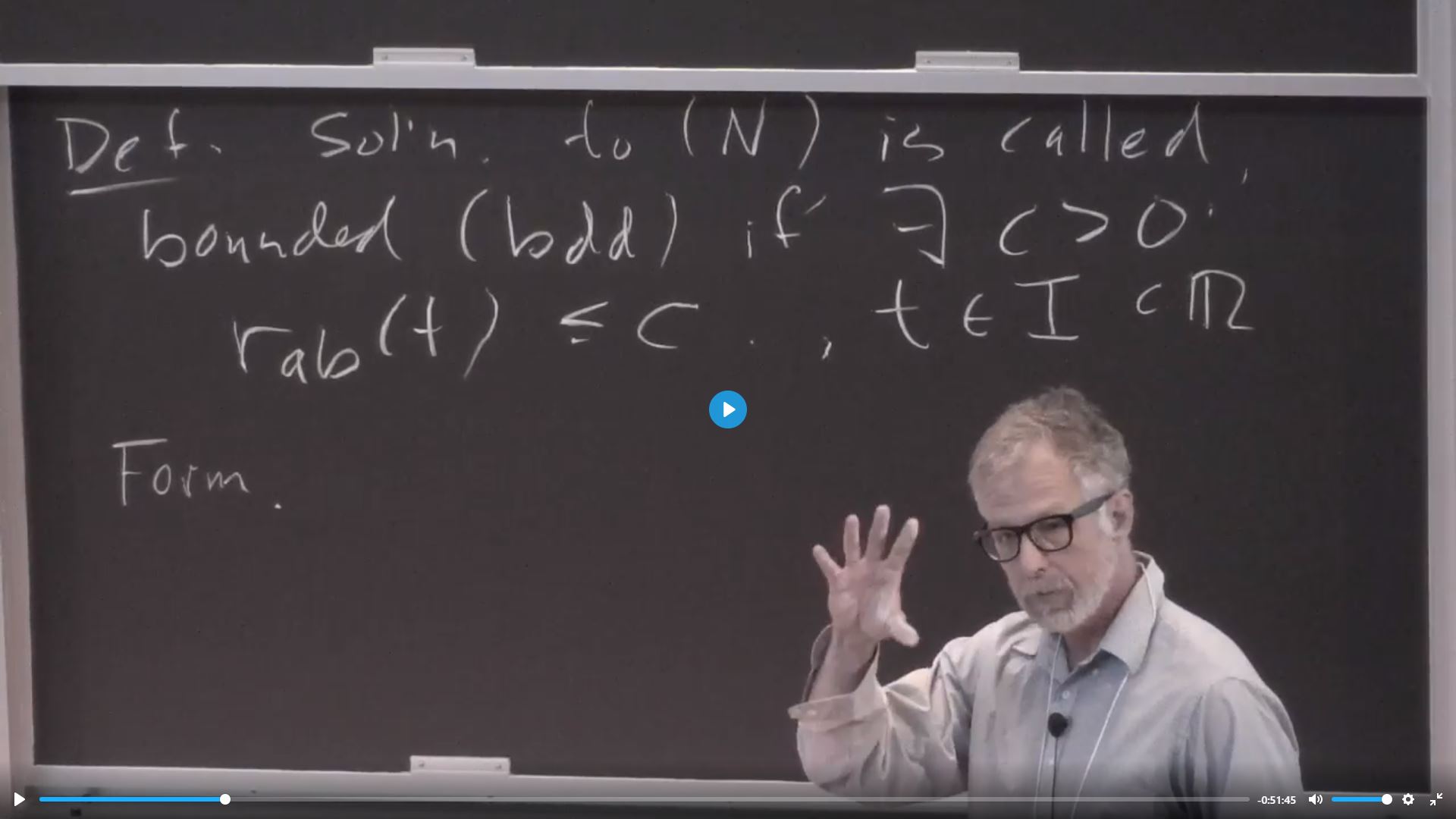Hamiltonian Systems, From Topology To Applications Through Analysis II - Infinitely many coplanarities
Presenter
November 26, 2018
Keywords:
- Shape space
- Principal Value
- Decomposition
- Newton's equations
- N-body problem
- Hamilton-Jacobi equations
- Sign and the Meaning of Curvature
MSC:
- 32Q10
Abstract
Consider the Newtonian 4-body problem in 3-space with zero angular momentum and any mass ratios. Theorem: every bounded solution defined on an infinite time interval suffers infinitely many coplanar instants: instants where all four bodies lie in the same plane. This generalizes a theorem asserting that for the zero angular momentum 3-body problem in the plane, every bounded solution suffers infinitely many collinear instants, or ``syzygies''. The obvious generalization holds for any dimension $d$, that is, for the zero angular momentum $d+1$-body problem in $d$-space. After stating the results, I give a heuristic physical ``proof'' of this theorem inspired by Mark Levi. I then proceed to sketch the mathematical proof. Among its main ingredients are that (i) the translation-reduced problem has for its configuration space the space of $d \times d$ matrices (ii) the signed distance from the degeneration locus satisfies a Hamilton-Jacobi equation, (iii) the oriented shape space is homeomorphic to a Euclidean space (iv) the oriented shape space has non-negative sectional curvature where smooth. The theorem gives a ``hunting license'' to set up symbolic dynamics for the spatial 4-body problem, in analogy with the idea of syzygy sequences for the planar three-body problem.
